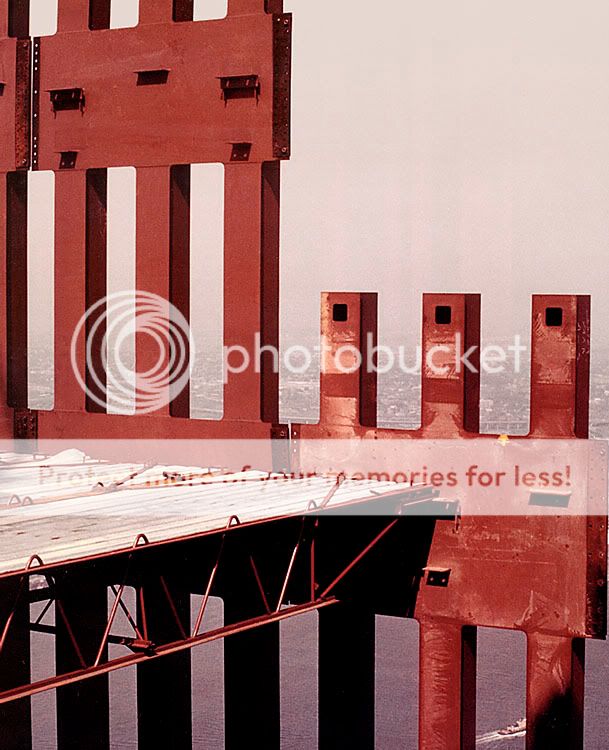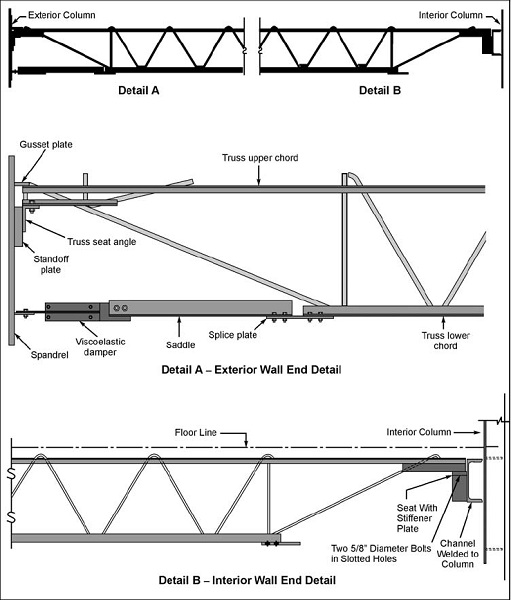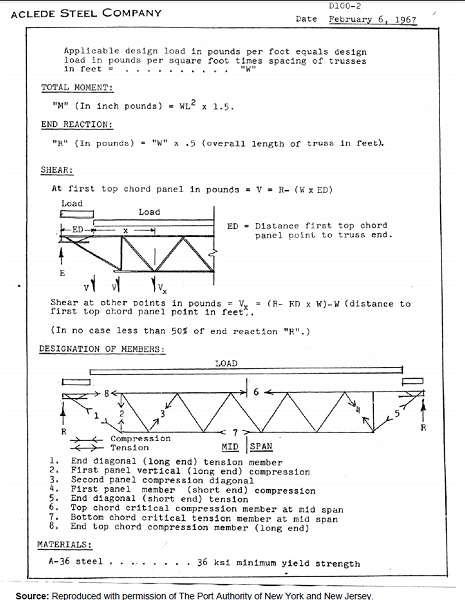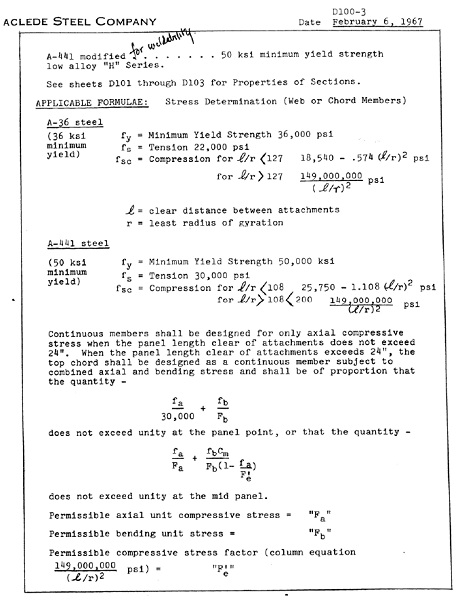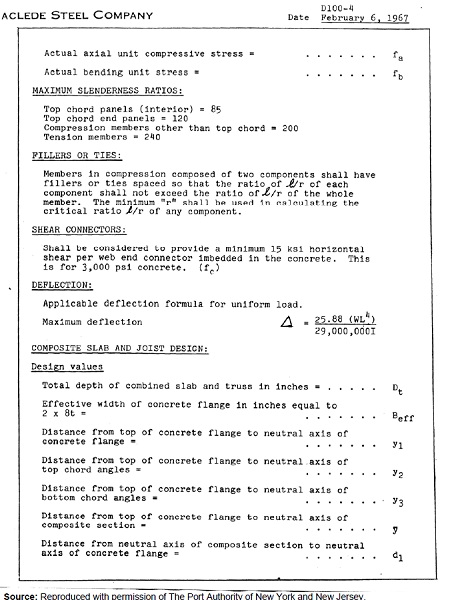It looks like you're using an Ad Blocker.
Please white-list or disable AboveTopSecret.com in your ad-blocking tool.
Thank you.
Some features of ATS will be disabled while you continue to use an ad-blocker.
share:
Originally posted by ANOK
How can you even imagine those trusses pulling in those columns, let alone the much more massive core columns that were braced together essentially forming a free-standing structure. You are stretching some facts, and leaving other out, in order to make an argument.
Can you please explain what is happening here?
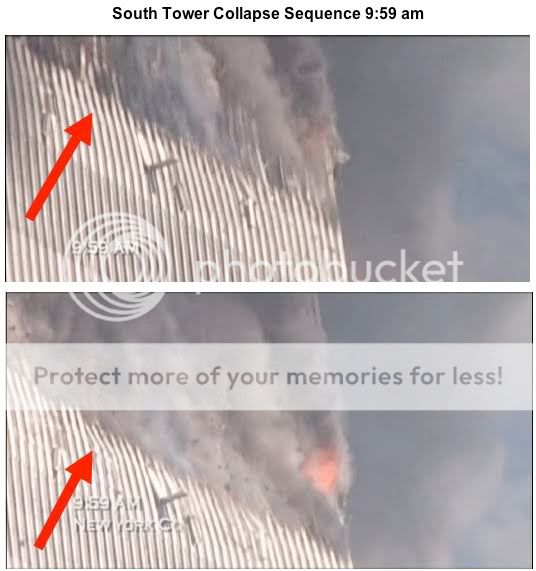
reply to post by ANOK
Here is what you said:
However, as it was shown, fire can very rapidly affect steel, to the point of failure. Is this not so? So, if that can happen, then why is it so hard to understand that the failure of certain sections in the structure from fire canbring about global collapse? It is just like taking out the supports with explosives, however, in this case, fire is what brought down WTC7. Fires burning for hours and poor ventilation keeping the heat in affects the steel just as bad. All it needs to do is soften to the point where it starts to creep, and lose strength, and then, it is a matter of time if the fires continue.
WTC7 had fires burning across multiple floors, for many many hours. And just because the "fuel" was used up in one section, does not mean that it immediately cools off and is safe.
Also, the trusses were acting in unison. Did you learn that part in physics too? How force can be even applied across more points. One truss is not enough to pull in the columns. However, a whole set can, working together. Remember the idea behind a nail bed? If you lay on one nail, it will probably go right into you and not support you. But a bed of nails, and you can lay on it no problem. One truss cannot pull on the columns, but a whole bunch can. Didnt they teach you that in physics?
And what happens when say, the core column is softening and creeping down, and then is subjected to pulling forces from the sagging trusses? What then? When something turns pliable, it is far more susceptible to being displaced and affected.
Here is what you said:
It takes a finite amount of time for steel to get hot from random fires. It takes a controlled (max temp.), direct flame to get the results your "educated analysis" is claiming. As fire moves, once fuel is used up, then the steel instantly starts to cool.
However, as it was shown, fire can very rapidly affect steel, to the point of failure. Is this not so? So, if that can happen, then why is it so hard to understand that the failure of certain sections in the structure from fire canbring about global collapse? It is just like taking out the supports with explosives, however, in this case, fire is what brought down WTC7. Fires burning for hours and poor ventilation keeping the heat in affects the steel just as bad. All it needs to do is soften to the point where it starts to creep, and lose strength, and then, it is a matter of time if the fires continue.
WTC7 had fires burning across multiple floors, for many many hours. And just because the "fuel" was used up in one section, does not mean that it immediately cools off and is safe.
Also, the trusses were acting in unison. Did you learn that part in physics too? How force can be even applied across more points. One truss is not enough to pull in the columns. However, a whole set can, working together. Remember the idea behind a nail bed? If you lay on one nail, it will probably go right into you and not support you. But a bed of nails, and you can lay on it no problem. One truss cannot pull on the columns, but a whole bunch can. Didnt they teach you that in physics?
And what happens when say, the core column is softening and creeping down, and then is subjected to pulling forces from the sagging trusses? What then? When something turns pliable, it is far more susceptible to being displaced and affected.
reply to post by coyotepoet
Is that fact connected to the fact that not all building collapses have been caught on video? There's not one single video of me walking up the stairs in my house - does that mean I've never been to the second floor in my own home?
Find me a video/example of a total non-controlled building collapse that looks exactly like a CD. But you won't because you can't.
Is that fact connected to the fact that not all building collapses have been caught on video? There's not one single video of me walking up the stairs in my house - does that mean I've never been to the second floor in my own home?
Originally posted by ANOK
Originally posted by GenRadek
Yes it does matter. ANOK and other truthers say that steel cannot be affected by fire fast enough to cause any sort of failure.
I'm only wrong because you simply don't understand how this works.
You are wrong, because you fail to understand the argument and take it all out of context, and miss the big picture. No one is saying steel cannot be affected by fire fast enough to cause failure.
What we are saying is fire cannot cause the effects we see on the three WTC buildings, i.e. complete collapse with no signs of resistance, or cause trusses to pull in columns.
A roof collapse is not a building collapse. Sagging or collapsing roof trusses do not pull in the buildings walls, and cause complete collapse of the rest of the building.
Just look at the size of the floor assemblies compared with the columns...
How can you even imagine those trusses pulling in those columns, let alone the much more massive core columns that were braced together essentially forming a free-standing structure. You are stretching some facts, and leaving other out, in order to make an argument.
This is an excellant picture.
Look at how flimsy the floor trusses seem.
Also look at the bolt holes connecting the exterior steel sections to each other. The size and limited number of them don't inspire a feeling of strength to me.
reply to post by coyotepoet
Yes the building was U shaped composed of 2 separate wings - the nearest wing collapsed from the fire
Thats because in essence are 2 separate buildings -the FF were able to seal off the far wing anf prevent
fire from spreading to it
At WTC 7 the fires had possession of entire floors, some 13 floors were on fire. Because of water supply
problems there were no firefighting operations in WTC 7
If look close can see water being sprayed on Delft build from lower left foreground
You asked aboout building looking like "controlled demolition" = so explain how this does not fit the case
All structural collapses once initiated will look like a CD for simple reason, because it is gravity which
is responsible. Once the supports are compromised, either by explosives or fires then gravity will pull the
building down
Purpose of CD is to contain the rubble and break it up to make easier to haul away. Any fool can collapse
a building - it is in getting the debris to fall in particular direction that is the real skill
Really? Because in that video I only see the part of the building that was on fire collapse, not the whole thing. You can clearly see the building through the smoke.
Yes the building was U shaped composed of 2 separate wings - the nearest wing collapsed from the fire
Thats because in essence are 2 separate buildings -the FF were able to seal off the far wing anf prevent
fire from spreading to it
At WTC 7 the fires had possession of entire floors, some 13 floors were on fire. Because of water supply
problems there were no firefighting operations in WTC 7
If look close can see water being sprayed on Delft build from lower left foreground
You asked aboout building looking like "controlled demolition" = so explain how this does not fit the case
All structural collapses once initiated will look like a CD for simple reason, because it is gravity which
is responsible. Once the supports are compromised, either by explosives or fires then gravity will pull the
building down
Purpose of CD is to contain the rubble and break it up to make easier to haul away. Any fool can collapse
a building - it is in getting the debris to fall in particular direction that is the real skill
reply to post by Drunkenparrot
ANOK talks about heat transfer, but ignores just how its suppose to work in this case. It all depends on the amount of surface area in contact with the heated object. In this case, all that heat from the truss, has to travel through the bolt on each end AND then through the truss seat tab that is welded on. The heat sink would not be fast enough in this case, and trusses like those in the WTC floor systems heat up very rapidly once directly exposed to the fires.
ANOK talks about heat transfer, but ignores just how its suppose to work in this case. It all depends on the amount of surface area in contact with the heated object. In this case, all that heat from the truss, has to travel through the bolt on each end AND then through the truss seat tab that is welded on. The heat sink would not be fast enough in this case, and trusses like those in the WTC floor systems heat up very rapidly once directly exposed to the fires.
Originally posted by Six Sigma
Can you please explain what is happening here?
There could be many explanation, but trusses pulling in columns is not one of them as that is impossible as I have explained. Sagging trusses would simply sag, if they could pull in columns they would not have sagged.
How could sagging trusses put any more force on the columns? Even if they could put more force on the columns, do you really think they columns would not be able to handle the extra force?
How many times have I told you to learn and understand factors of safety? You know the engineering principle that all construction component have to be able to hold their own weight, plus the weight that component will experience during its life time? If you understood that you would understand that all components can take more more force, pressure, than they have to normally withstand. This means any extra force is not going to cause failure. Especially from sagging lightweight trusses.
The FoS for steel used in buildings is x4-6.
www.engineeringtoolbox.com...
Here is the math...
sw=sm/fs
Where:
Sm = Allowable working unit stress
sw = Working stress (Allowable stress)
fs = Factor of Safety
www.engineersedge.com...
The inward bowing could simply be the aluminum distorting from heat, you know the aluminum was not directly against the steel?
Sorry but that pic is not conclusive evidence that columns were being pulled in by the trusses. And even if they were it doesn't mean it could cause complete collapse, you still have to consider equal opposite reaction and all that.
What about floors that were not held up by trusses?
On the 41st and 42nd floors, both towers will house mechanical equipment. To accommodate the heavy loads, the floors are designed as structural steel frame slabs. All other floors from the ninth to the top (except for 75 and 76, which will also carry mechanical equipment) have typical truss floor joists and steel decking.
911research.wtc7.net...
So floors 41, 42, 75 and 76 were of a different design. More like this...
www.tatasteelconstruction.com... r_systems/
Also you fail to explain again why the 5/8", and 1", bolts did not fail before the columns were pulled in? When are you going to address that contradiction to your claims? Or were the connections stronger than the columns? If they were, then why did they fail on floors that were not effected by fire, or damage.
C'mon physics experts explain the details you keep ignoring.
edit on 4/16/2012 by ANOK because: (no reason given)
Originally posted by ANOK
Originally posted by Six Sigma
Can you please explain what is happening here?
There could be many explanation, but trusses pulling in columns is not one of them as that is impossible as I have explained.
It could be simply the aluminum distorting from heat, you know the aluminum was not directly against the steel.
Look at the time stamp.. and the two pictures..... and guess again.
Originally posted by Six Sigma
Look at the time stamp.. and the two pictures..... and guess again.
What has the time stamp have to do with anything?
I'm not guessing, you are. I am not making a claim as to what is causing that, only what it cannot possibly be.
You guys always seem to think if you can't explain how something happened, then you can't claim to know it didn't happen as you claim. Nonsense, science is always a process of elimination, and I have eliminated your claim. You need to look for another reason for the bowing of the cladding. Because all you can see is cladding, not evidence of bowed columns.
Originally posted by GenRadek
reply to post by ANOK
Here is what you said:
It takes a finite amount of time for steel to get hot from random fires. It takes a controlled (max temp.), direct flame to get the results your "educated analysis" is claiming. As fire moves, once fuel is used up, then the steel instantly starts to cool.
However, as it was shown, fire can very rapidly affect steel, to the point of failure. Is this not so? So, if that can happen, then why is it so hard to understand that the failure of certain sections in the structure from fire canbring about global collapse? It is just like taking out the supports with explosives, however, in this case, fire is what brought down WTC7. Fires burning for hours and poor ventilation keeping the heat in affects the steel just as bad. All it needs to do is soften to the point where it starts to creep, and lose strength, and then, it is a matter of time if the fires continue.
WTC7 had fires burning across multiple floors, for many many hours. And just because the "fuel" was used up in one section, does not mean that it immediately cools off and is safe.
Also, the trusses were acting in unison. Did you learn that part in physics too? How force can be even applied across more points. One truss is not enough to pull in the columns. However, a whole set can, working together. Remember the idea behind a nail bed? If you lay on one nail, it will probably go right into you and not support you. But a bed of nails, and you can lay on it no problem. One truss cannot pull on the columns, but a whole bunch can. Didnt they teach you that in physics?
And what happens when say, the core column is softening and creeping down, and then is subjected to pulling forces from the sagging trusses? What then? When something turns pliable, it is far more susceptible to being displaced and affected.
The only way global collapse can even start is to eliminate a substantial horizontal cross section. meaning like at least one or two floors form the entire building.
Like you say EXPLOSIVES
Poor ventilation cooler fire smolders only.
Think draft.
If the center falls then the perimiter couloms will for a tee pee and keep the building up.
Displased and affected yeah. But like Weebles that wobble they DON'T FALL DOWN.
They fall down with BOOM pop pop pop boom pop pop boom boom pop pop.
And that's how BUILDING SEVEN FELL INTO IT'S OWN FOOT PRINT after LARRY said PULL IT.
any questions?? ljb
Originally posted by ANOK
Originally posted by Six Sigma
Can you please explain what is happening here?
There could be many explanation, but trusses pulling in columns is not one of them as that is impossible as I have explained. Sagging trusses would simply sag, if they could pull in columns they would not have sagged.
How could sagging trusses put any more force on the columns? Even if they could put more force on the columns, do you really think they columns would not be able to handle the extra force?
How many times have I told you to learn and understand factors of safety? You know the engineering principle that all construction component have to be able to hold their own weight, plus the weight that component will experience during its life time? If you understood that you would understand that all components can take more more force, pressure, than they have to normally withstand. This means any extra force is not going to cause failure. Especially from sagging lightweight trusses.
The FoS for steel used in buildings is x4-6.
www.engineeringtoolbox.com...
Here is the math...
sw=sm/fs
Where:
Sm = Allowable working unit stress
sw = Working stress (Allowable stress)
fs = Factor of Safety
www.engineersedge.com...
The inward bowing could simply be the aluminum distorting from heat, you know the aluminum was not directly against the steel?
Sorry but that pic is not conclusive evidence that columns were being pulled in by the trusses. And even if they were it doesn't mean it could cause complete collapse, you still have to consider equal opposite reaction and all that.
What about floors that were not held up by trusses?
On the 41st and 42nd floors, both towers will house mechanical equipment. To accommodate the heavy loads, the floors are designed as structural steel frame slabs. All other floors from the ninth to the top (except for 75 and 76, which will also carry mechanical equipment) have typical truss floor joists and steel decking.
911research.wtc7.net...
So floors 41, 42, 75 and 76 were of a different design. More like this...
www.tatasteelconstruction.com... r_systems/
Also you fail to explain again why the 5/8", and 1", bolts did not fail before the columns were pulled in? When are you going to address that contradiction to your claims? Or were the connections stronger than the columns? If they were, then why did they fail on floors that were not effected by fire, or damage.
C'mon physics experts explain the details you keep ignoring.
edit on 4/16/2012 by ANOK because: (no reason given)
If the time stamp is a nano second before Building Seven Falls into it's OWN FOOT PRINT??
Then I will say DEMOLITION CHARGES.
providing the first HORIZONTAL cross sectional VOID.
Originally posted by longjohnbritches
If the center falls then the perimiter couloms will for(m?) a tee pee and keep the building up.
building structures 101 people! The Tee Pee principle. Or teh TP Principle for short.
Originally posted by longjohnbritches
But like Weebles that wobble they DON'T FALL DOWN.
That's what they tell you on thefirst day at MIT. Get with the program, peeps!
edit on 4/16/2012 by
DrEugeneFixer because: (no reason given)
Originally posted by ANOK
The inward bowing could simply be the aluminum distorting from heat, you know the aluminum was not directly against the steel?
I have refuted this point conclusively in the link titled "about the WTC cladding" in my signature. That post was a direct repy to your own post, so I hope you read it. There is no possibility for the cladding to have bowed that much (farther than the steel could possibly be from the cladding), nor in that manner continuously over the height of several stories, and several pieces of cladding. I'd really like you to address this before using that argument again.
Originally posted by longjohnbritches
If the time stamp is a nano second before Building Seven Falls into it's OWN FOOT PRINT??
Then I will say DEMOLITION CHARGES.
First off, that is obviously not building 7, so whatever.
Second- what kind of demolition charges slowly pull the perimeter of a building's structure inward?
Originally posted by longjohnbritches
Poor ventilation cooler fire smolders only.
Think draft.
Good thing nobody knocked giant holes in the building right before the fire started, or the fires might have been well ventilated.
Originally posted by DrEugeneFixer
Originally posted by ANOK
The inward bowing could simply be the aluminum distorting from heat, you know the aluminum was not directly against the steel?
That post was a direct ( repLy?) to your own post, so I hope you read it. There is no possibility for the cladding to have bowed that much (farther than the steel could possibly be from the cladding), nor in that manner continuously over the height of several stories, and several pieces of cladding. I'd really like you to address this before using that argument again.
MAY I ?? EXPLOSIVES
MIT 101 second day
Originally posted by DrEugeneFixer
I have refuted this point conclusively in the link titled "about the WTC cladding" in my signature. That post was a direct repy to your own post, so I hope you read it. There is no possibility for the cladding to have bowed that much (farther than the steel could possibly be from the cladding), nor in that manner continuously over the height of several stories, and several pieces of cladding. I'd really like you to address this before using that argument again.
Fine, then that is also not the explanation. Do you have another one, because we are running out pretty quick here?
I would like you to address my point about the 5/8" and 1" bolts, why you think they would be stronger than the massive, in comparison, columns?
Let alone you keep refusing to address the physics of expanding materials, and how the steel would sag because the trusses couldn't expand, as they were pinned between columns, and if they couldn't expand they couldn't pull in. If they could expand they wouldn't have sagged in the first place, because the sagging is caused by the expanding. When are you going to get that? Not understanding this basic physics, proves you don't understand basic physics, QED.
Unless you address those points, your sagging truss hypothesis is debunked. So before you say anything else on this subject, address those points.
edit on 4/16/2012 by ANOK because: (no reason given)
reply to post by longjohnbritches
May you what?
My god, man. What kind of explosive pulls in on the perimeter of a building's structure?
May you what?
My god, man. What kind of explosive pulls in on the perimeter of a building's structure?
If I may suggest a point.
If the trusses were overloaded with debris from another floor and or plane parts then they will sag. Regardless of the fire.
If the exterior columns were severed by the plane AND the trusses were overloaded would you not expect the exterior to be pulled inward below the cut point?
As per the picture.
If the trusses were overloaded with debris from another floor and or plane parts then they will sag. Regardless of the fire.
If the exterior columns were severed by the plane AND the trusses were overloaded would you not expect the exterior to be pulled inward below the cut point?
As per the picture.
new topics
-
WF Killer Patents & Secret Science Vol. 1 | Free Energy & Anti-Gravity Cover-Ups
General Conspiracies: 16 minutes ago -
Hurt my hip; should I go see a Doctor
General Chit Chat: 1 hours ago -
Israel attacking Iran again.
Middle East Issues: 2 hours ago -
Michigan school district cancels lesson on gender identity and pronouns after backlash
Education and Media: 2 hours ago -
When an Angel gets his or her wings
Religion, Faith, And Theology: 3 hours ago -
Comparing the theology of Paul and Hebrews
Religion, Faith, And Theology: 3 hours ago -
Pentagon acknowledges secret UFO project, the Kona Blue program | Vargas Reports
Aliens and UFOs: 4 hours ago -
Boston Dynamics say Farewell to Atlas
Science & Technology: 5 hours ago -
I hate dreaming
Rant: 5 hours ago -
Man sets himself on fire outside Donald Trump trial
Mainstream News: 7 hours ago
top topics
-
The Democrats Take Control the House - Look what happened while you were sleeping
US Political Madness: 8 hours ago, 18 flags -
In an Historic First, In N Out Burger Permanently Closes a Location
Mainstream News: 10 hours ago, 16 flags -
A man of the people
Medical Issues & Conspiracies: 15 hours ago, 11 flags -
Biden says little kids flip him the bird all the time.
Politicians & People: 7 hours ago, 8 flags -
Man sets himself on fire outside Donald Trump trial
Mainstream News: 7 hours ago, 7 flags -
Pentagon acknowledges secret UFO project, the Kona Blue program | Vargas Reports
Aliens and UFOs: 4 hours ago, 6 flags -
Israel attacking Iran again.
Middle East Issues: 2 hours ago, 5 flags -
Michigan school district cancels lesson on gender identity and pronouns after backlash
Education and Media: 2 hours ago, 4 flags -
4 plans of US elites to defeat Russia
New World Order: 17 hours ago, 4 flags -
Boston Dynamics say Farewell to Atlas
Science & Technology: 5 hours ago, 4 flags
active topics
-
MULTIPLE SKYMASTER MESSAGES GOING OUT
World War Three • 52 • : cherokeetroy -
Israel attacking Iran again.
Middle East Issues • 22 • : Boomer1947 -
WF Killer Patents & Secret Science Vol. 1 | Free Energy & Anti-Gravity Cover-Ups
General Conspiracies • 1 • : WakeofPoseidon -
Hurt my hip; should I go see a Doctor
General Chit Chat • 8 • : Dandandat3 -
The Democrats Take Control the House - Look what happened while you were sleeping
US Political Madness • 67 • : WeMustCare -
Thousands Of Young Ukrainian Men Trying To Flee The Country To Avoid Conscription And The War
Other Current Events • 53 • : ghandalf -
Boston Dynamics say Farewell to Atlas
Science & Technology • 5 • : Caver78 -
Biden says little kids flip him the bird all the time.
Politicians & People • 16 • : stelth2 -
When an Angel gets his or her wings
Religion, Faith, And Theology • 2 • : stelth2 -
Pentagon acknowledges secret UFO project, the Kona Blue program | Vargas Reports
Aliens and UFOs • 7 • : Ophiuchus1

